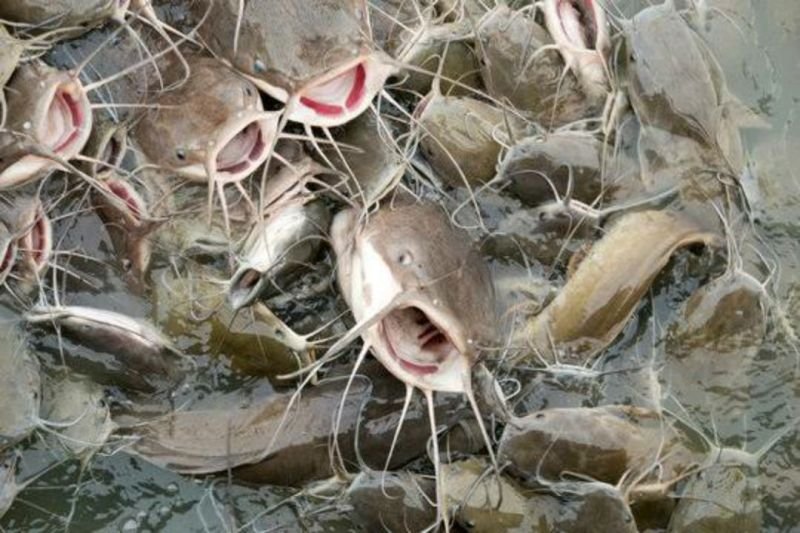In the dynamic world of aquaculture, maintaining the health of your African catfish is crucial for a thriving and profitable business. While these resilient fish species boast high resistance to infections, it’s essential to be vigilant and proactive in addressing any signs of diseases.That’s where we come in, Agrofiat, your aquaculture ally! In this comprehensive guide, we’ll explore the causes, symptoms, prevention, and treatment of common African catfish diseases, ensuring your farm remains robust and resilient.

Signs of African Catfish Diseases
Understanding Your Fish: African catfish, known for their toughness, can exhibit signs of diseases linked to environmental or management issues. Learn to recognize abnormal behaviors and physical abnormalities such as reduced barbel size, skin ulcers, or swollen head kidneys.
Diagnosis and Treatment
Bacterial Infections: Identify gram-negative bacterial infections like Aeromonas sp. with the help of an antibiogram. We’ll guide you through proper diagnosis and the use of antibiotics, such as Oxytetracycline and Trimethasulfmix, highlighting the importance of seeking assistance from a fish disease specialist or veterinarian.
Ensuring Effective Treatment: Avoid common pitfalls in the application of antibiotics by understanding the right dosages. Learn how to build a preventive approach by having essential antibiotics in stock and establishing treatment procedures before issues arise.
Diseases and Control Measures

Common Diseases:
- Bacterial Infections: Columnaris Disease (Flavobacterium columnare) and Aeromoniasis (Aeromonas bacteria) result in skin lesions and fin rot.
- Viral Infections: Iridovirus causes systemic issues like skin lesions and organ damage.
- Parasitic Infections: Ichthyophthirius (Ich) and Gyrodactylus/Dactylogyrus lead to cysts and affect skin and gills.
Environmental Stress:
- Poor water quality, low oxygen, and overcrowding increase susceptibility to diseases.
Nutritional Deficiencies:
- Inadequate diets weaken the immune system, making fish prone to diseases.
Protozoan Infections:
- Hexamita causes hole-in-the-head disease.
Prevention and Treatment:
- Maintain good water quality, provide a balanced diet, and monitor fish health regularly.
- Quarantine new fish to prevent disease spread.
- Specific treatments vary; antibiotics, anti-parasitic medications, and water quality control may be necessary.
Mystery Diseases:
- Broken Head Syndrome and Ruptured Intestine Syndrome remain enigmatic.
- Supplementation with Vitamin C is suggested for Broken Head Syndrome, emphasizing preventive measures.
Your Action Plan

Empowering Fish Health: Equip yourself with actionable steps to empower the health of your African catfish. From routine checks to a well-balanced diet, we’ll guide you in creating a proactive action plan.
Continued Learning and Collaboration: Stay connected with Agrofiat’s community for ongoing insights and collaborative learning. Our platform is more than a source of information; it’s a hub for shared experiences and collective growth.
A Thriving Aquaculture Venture Awaits!
A healthy African catfish farm is a profitable one. By understanding diseases, taking preventative measures, and joining our supportive community, you’ll be well on your way to building a resilient aquaculture business that thrives. So, pick up your virtual fishing rod, arm yourself with knowledge, and embark on this exciting journey with Agrofiat! Let’s conquer challenges together and keep those African catfish happy and healthy.
Pingback: Successful Catfish Farming: The Ultimate Guide to Starting a Catfish Farm -